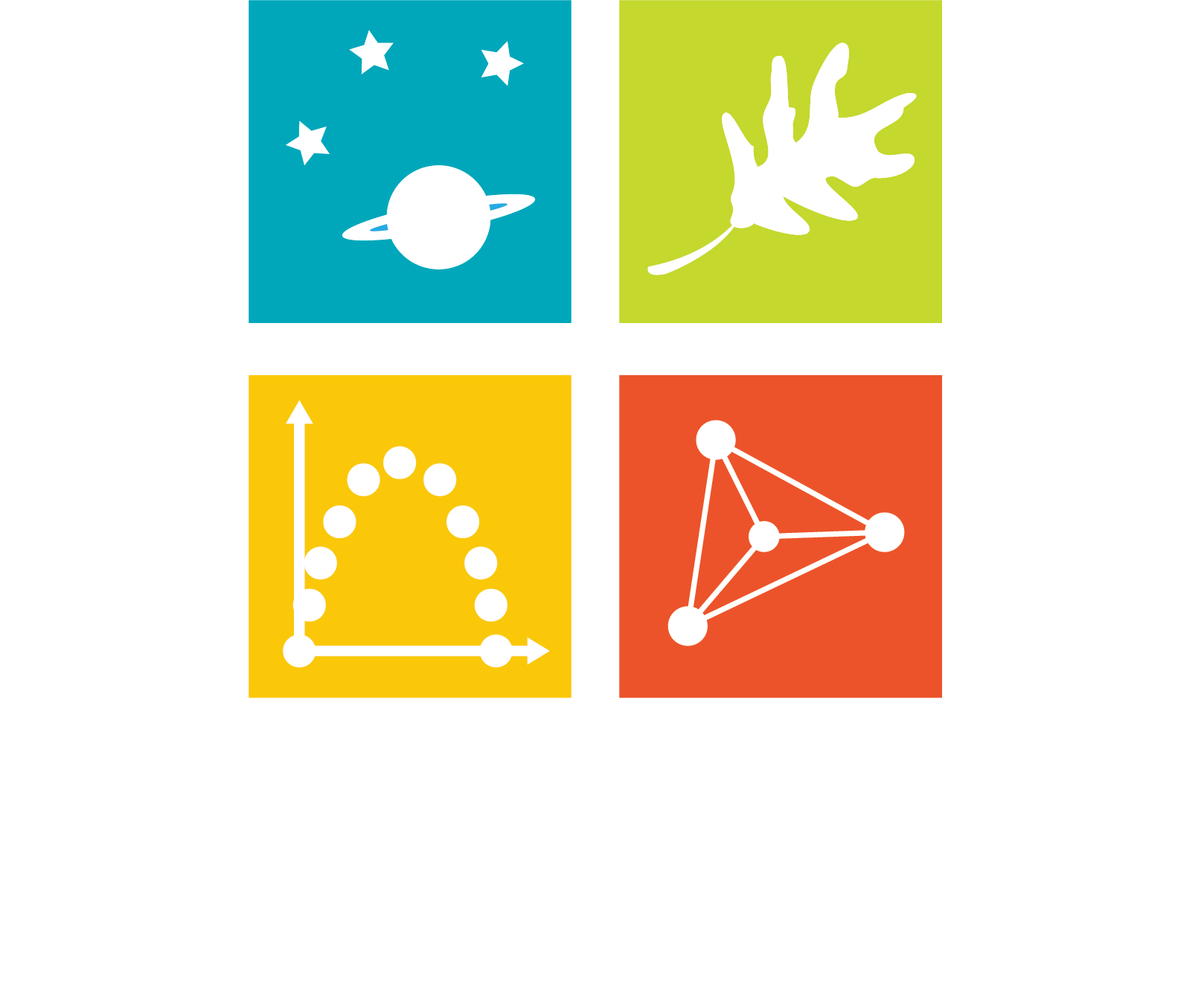NoCo Science Education Blog: Collecting Rain, Collecting Data, and Collecting Scientists with Nolan Doesken and Noah Newman
By Victoria Jordan
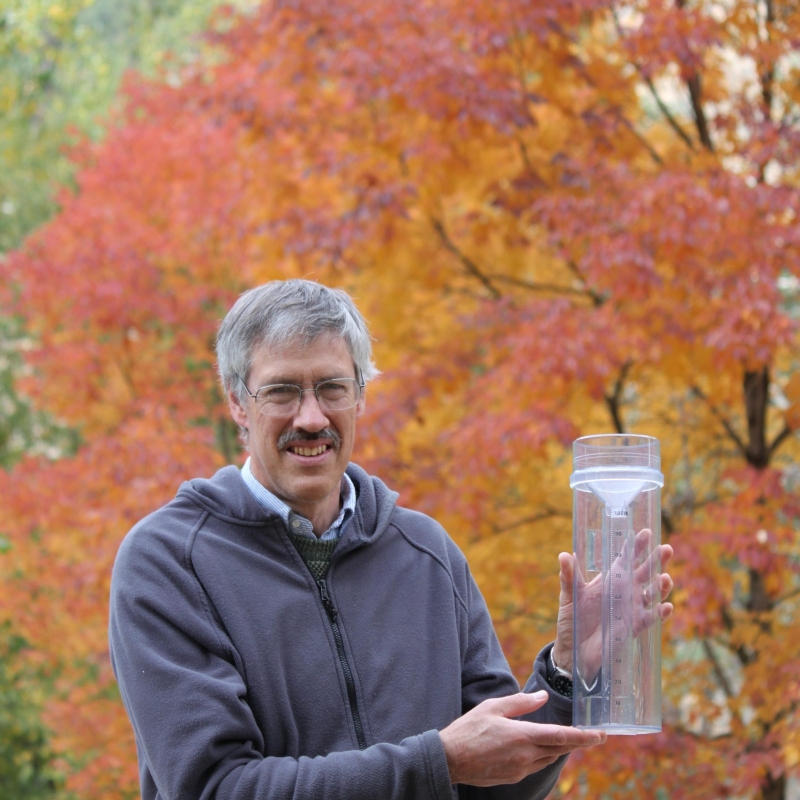
Station reports from the CoCoRaHS website:
“KY-LG-10 (12/13/2021)- Community trying to recover from Sunday morning tornado. Lots of damaged trees down, barns destroyed, houses damaged with roofs blown off, garage doors buckled, trees on cars, and houses, travel trailers and motor homes blown over. Probably excess of 100 fatalities – 10 known in joining county. A mile of 3 phase electric lines down-poles twisted and snapped.”
“Dear CoCoRaHS,
My home was destroyed in the recent tornado in Kentucky. My rain gauge vanished like Dorothy’s house. I will have to stop reporting my data for awhile.”
What IS CoCoRaHS?
CoCoRaHS is the Community Collaborative Rain, Hail and Snow Network. It is a non-profit, community-based network of volunteers who measure and report rain, hail, and snow in their backyards. CoCoRaHS is the brainchild of Nolan Doesken, retired Colorado State Climatologist. You can read more about the history of CoCoRaHS, check out the data, maps, and educational materials here: https://cocorahs.org/
What CoCoRaHS really is goes beyond the network of over 25,000 volunteer reporters from every State, Canada, Puerto Rico, Bahamas and the Virgin Islands, and its hundreds of users of the data, including The National Weather Service, other meteorologists, hydrologists, emergency managers, city utilities (water supply, water conservation, storm water), insurance adjusters, USDA, engineers, mosquito control, ranchers and farmers, outdoor & recreation interests, teachers, students, and neighbors in the community. Yes, it is all that. But, what cannot be captured in the data is the teamwork, collaboration, and sense of community that brings people together in this seemingly simple citizen science program.
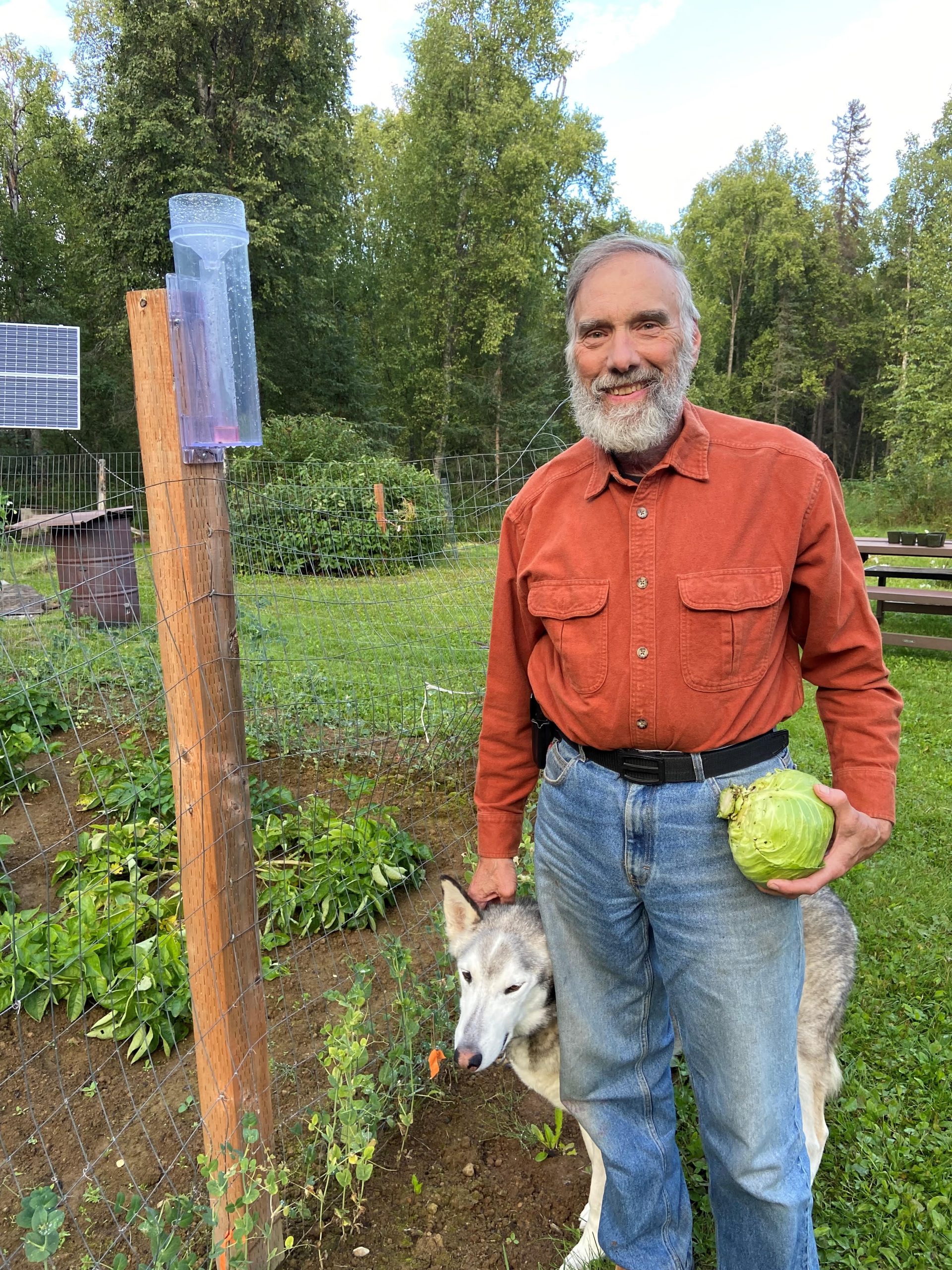
“Nothing I have ever done has resulted in so many friendly collaborations, all with just a simple backyard rain gauge!” says Nolan Doesken, the charismatic founder and backbone of the network. “Our youngest volunteers are 4-5 years old (with parental help), and our oldest is 103.” Nolan writes personal welcome letters to at least 20 applicants each month, and his newsletters contain both scientific information and personal notes about life on the farm that keep volunteers begging for more.
“Dear CoCoRaHS,
My husband recently passed on. For the past many years, he got up every morning at 6:45 so that he could check the rain gauge and report his data. You kept him going. Now, my children want to take the gauge and teach their children how to report data and maintain a connection with Grandpa. How can we transfer his account over to them?”
CoCoRaHS Creates Scientists
As volunteers enter their data, they have an opportunity to comment.
“AL-MG-17 (09/19/2021) – Rain continued throughout the night. The air is humid but cool this morning. Interestingly, we have 5 garden spider webs around the house. The most before was 2. They all appeared over just the last week or so.”
CO-LR-676 (03/15/21) – 1.62” moisture, snowpack depth 26”; The new snow amount is just an estimate because of drifting. It is likely more due to compacting. I had to go out a window to get to the rain gauge. Snow blocked the door.
“It amazes me how dedicated people are to the process,” says Noah Newman, education specialist with CoCoRaHS. One person wrote that CoCoRaHS is helping them stay sober with their AA commitment because they can’t get up to check the rain gauge at 7:00 am if they are hungover. When Nolan and Noah were trying to fill in some blank spots on the map by recruiting volunteers, one observer told them, “Come on over for dinner. I’ll put you in touch with our County Commissioner.”
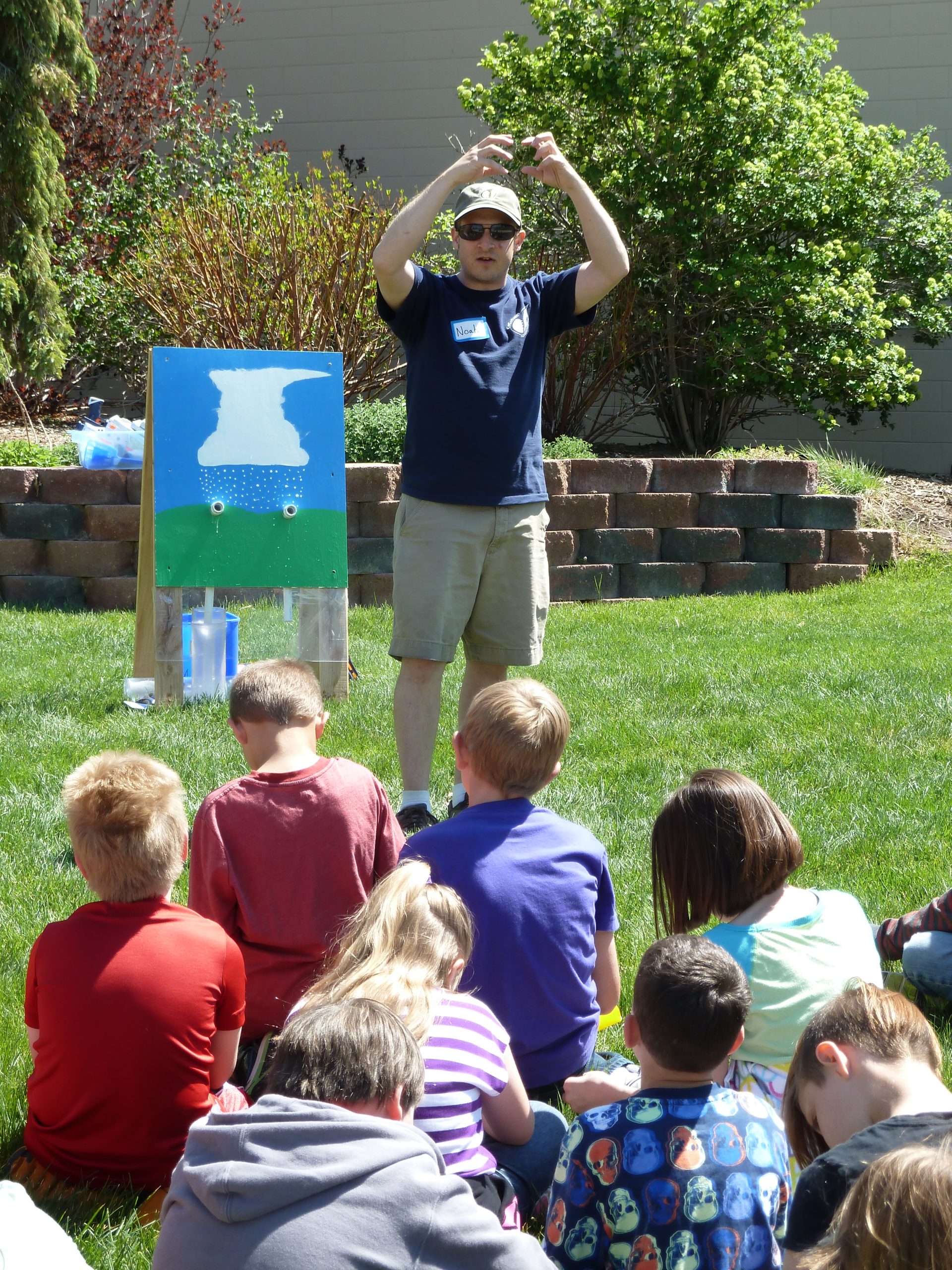
One of the highlights for Nolan was when the White House installed a CoCoRaHS gauge in Michelle Obama’s White House garden, and staff members were reporting the new station data. The Washington Post used their data in their daily weather reports while the station was operated. Nolan was honored at the White House science fair reception that year, and was photo-bombed by Bill Nye!
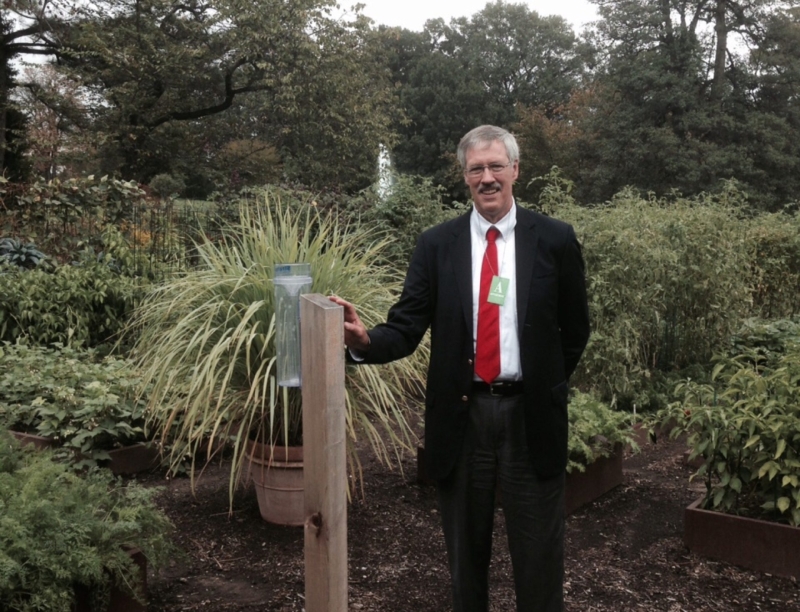
Noah works with K-12 schools across Colorado and the nation to develop lesson plans that allow students to become scientists. “I have many star teachers that have students report data throughout the school year, and some kids end up starting a station at their house. One particular teacher works at a juvenile detention facility in Oregon. The kids are so proud to be able to report data and learn atmospheric science. One graduate used his CoCoRaHS certificate to help him land a job as a forest firefighter.”
Motivation
CoCoRaHS has one of the largest volunteer networks of any citizen science program. With a 60% retention rate, they rank among the top programs in the nation. Consistency with the staff over the decades has been a key component to the success of the program. In a recent study to determine what motivates volunteers to continue reporting, many people commented on the value Nolan brings to CoCoRaHS.
“I’m reporting data because I was asked to do it by Nolan.”
“My brother roped me in, and I just keep doing it because I’m reminded in the newsletters and blurbs on the site how important the data is.”
“I love Nolan and his newsletter!”
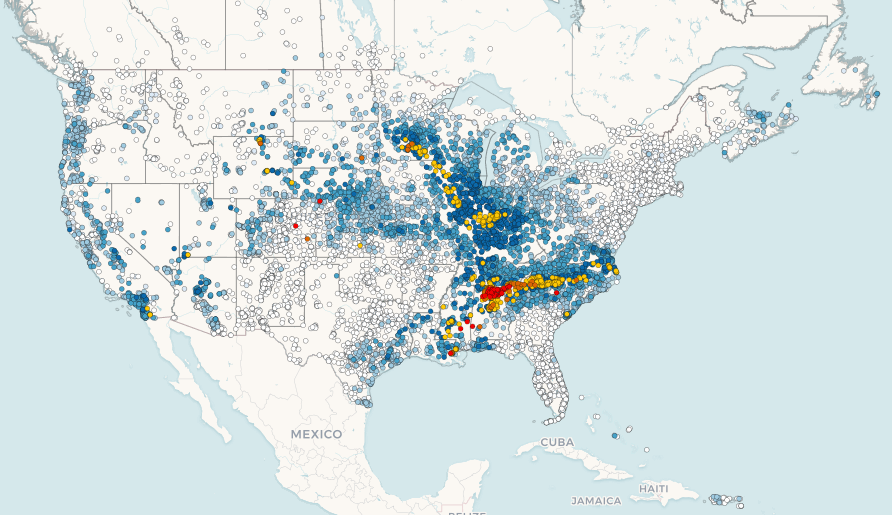
Noah adds that, “CoCoRaHS is a bit ‘gamified’ because each rain event is different, every day the map looks different, and it builds curiosity.” Reporting really took off during Covid because people were stuck at home. “We provided a way for people to be involved in their community in a positive manner, doing something that actually matters.”
What About the Data?
“Without CoCoRaHS, we would not have neighborhood-scale data,” Nolan says. Precipitation is so variable in the span of neighborhoods, that the goal is to have one rain gauge every square mile in urban and one every 36 square miles in rural areas across the nation. “One unique aspect of having this much coverage means that we can replace time with space to gather enough data to adjust historic averages,” Nolan adds. They have done statistical analyses in several parts of the country, and have found that if they have 10 or more volunteers reporting regularly in a 10 mile radius, they only need 2 years of precipitation data to equal the value of 100 years of data from a single “official” weather station. “It doesn’t line up quite right on the extreme ends of the data,” Nolan clarifies, “but, for things like the historic averages and 100 or 500 year weather events, it works great.”
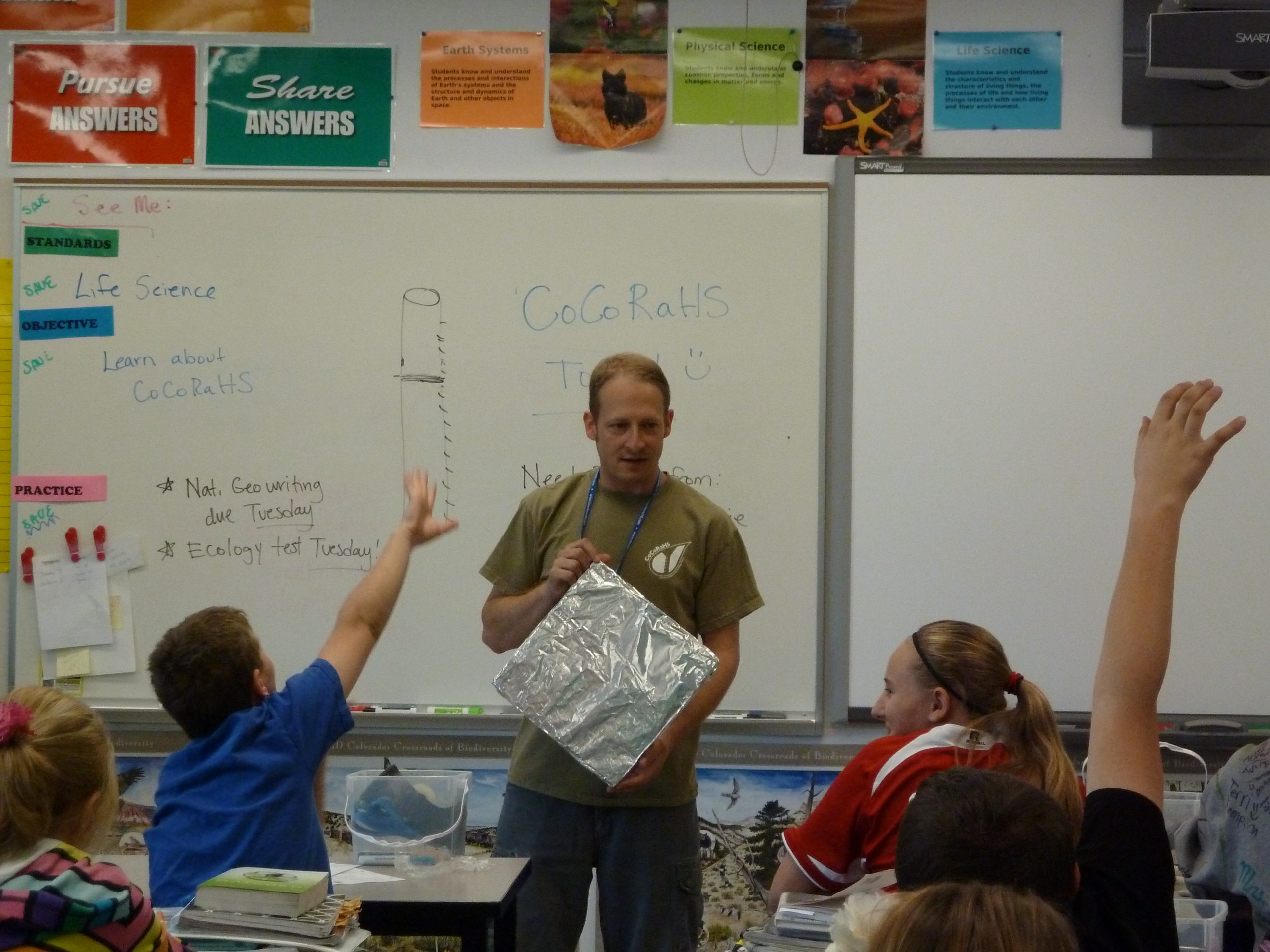
When NASA was still launching space shuttles, they needed to find a way to figure out if hail was damaging the tiles on the shuttle while it was sitting on the launch pad. CoCoRaHS to the rescue! The hail pads that are used, simply heavy-duty aluminum foil covering a square of 1” Styrofoam, are able to record enough data in a hail event to allow scientists to determine whether the shuttle can fly. Insurance companies can use the data to determine car and roof damage, as well.
Quality Control of the data is a big concern, and a lot of manpower is put into ensuring that volunteer data is reasonable and accurate. Coordinators throughout the nation monitor State data, and continue to educate volunteers whenever they notice mistakes. “We have an endless supply of new people who make the same old mistakes,” Noah says. “Data entry has decimal point mistakes. Snow depth gets tricky with wind and drifts. People often read their gauge correctly but enter the wrong day or time.”
“We are in an interesting time, with everything going digital,” Nolan says. “Raindrop spacing, drop size, wind all make a difference to the catch. But, what we have found over the years is that our CoCoRaHS rain gauge provides the most accurate data of any type of precipitation measurement device.” He is hopeful that the new generation of scientists and volunteers will be committed to continuing to use the manual gauge. “Being out in the weather allows people to have a rich experience. Every drop counts.”
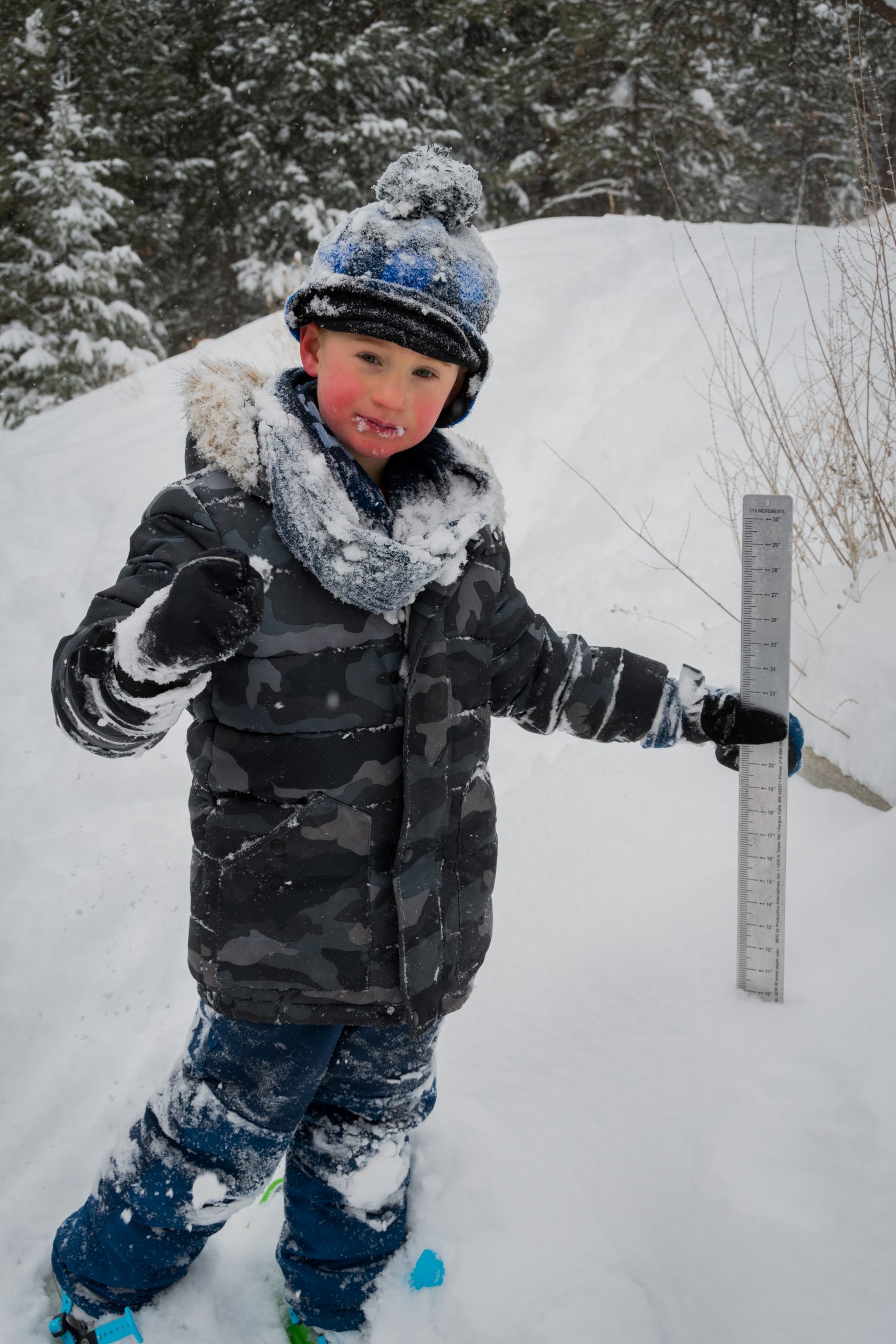
You can count, too. Visit the CoCoRaHS website https://cocorahs.org/ to purchase a gauge, apply for a station number, find lesson plans, attend an online or in person training, make a donation, and study the maps. Join the CoCoRaHS Juggernaut!
Listen to the original CoCoRaHS song by Dewey Longuski and lyrics by CoCoRaHS volunteer Ann Donoghue (CO-LR-36):
https://media.cocorahs.org/video/ComeHailOrHighWater.mp3
